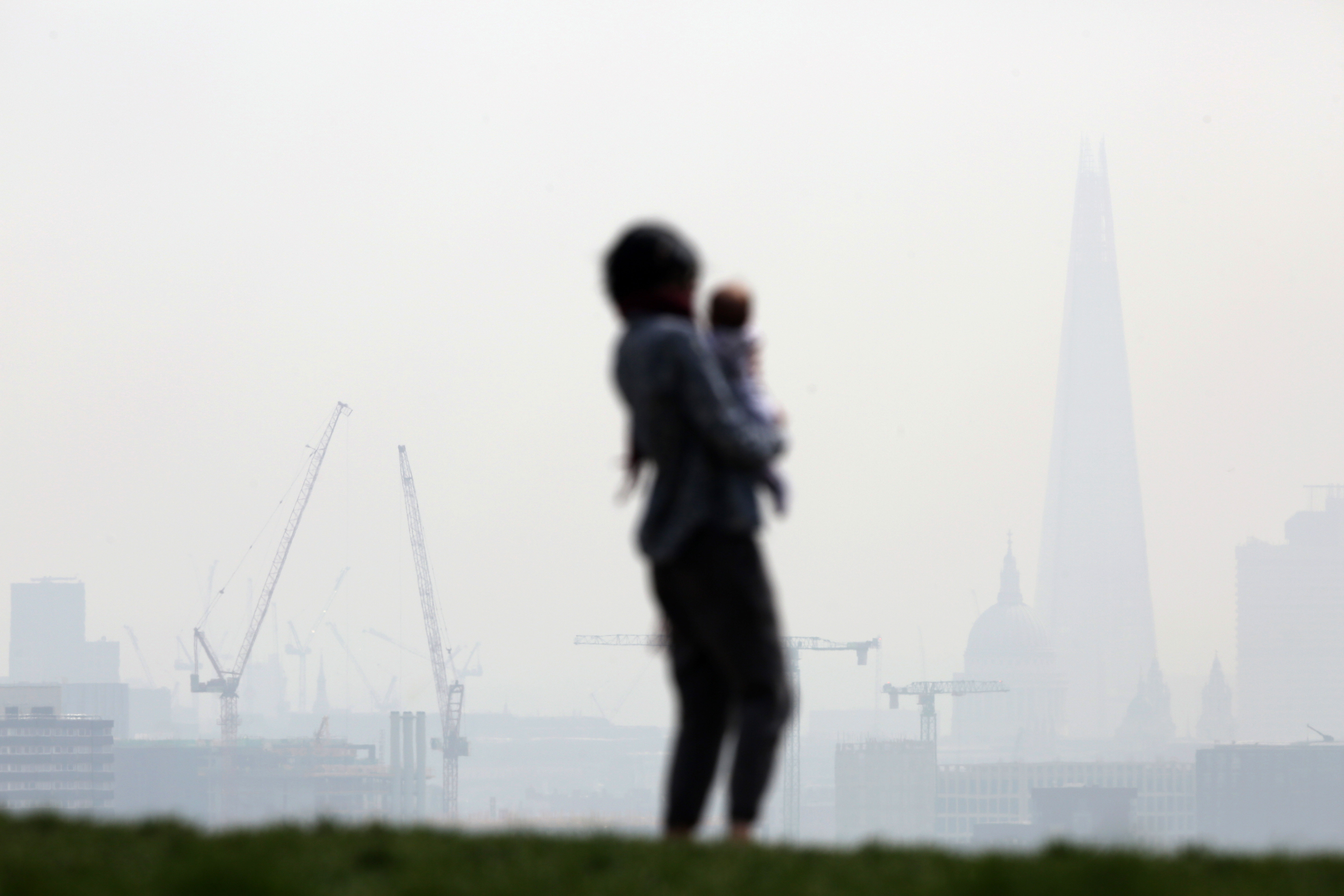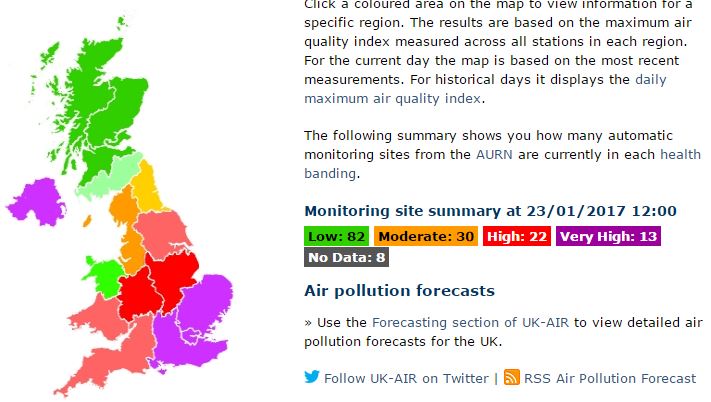High levels of air pollution recorded across the UK

Swathes of England and Northern Ireland have been experiencing high and very high levels of air pollution during a particularly toxic episode that is sweeping the country.
“Very high” levels – almost three times those recommended by the World Health Organisation – were recorded in London, Norwich, Reading, Belfast and Armagh on Monday morning.
The government has published official advice that recommends that in areas affected by levels this high, all people should reduce physical exertion, particularly outdoors.
An air quality expert at King’s College said that far more needs to be done to notify people during heavy pollution episodes.
These are the levels of air pollution in the UK today, recorded on the government’s air quality website at 11am.

It shows high levels of pollution across much of the country, especially in the Midlands, with very high levels of pollution in the south-east and Northern Ireland.
Weather conditions have exacerbated pollution levels caused by road transport and domestic wood burning.
Gary Fuller, an air pollution scientist at King’s College London, told Unearthed:
“There was a big rise in particulate concentrations in London last night, due to traffic emissions and home wood burning, combined with a lack of wind. Sunday night’s air pollution was slow to disperse and wood burning particles were still present in London’s air on Monday morning.”
He also said that still conditions have caused air pollution problems elsewhere in the UK.
Lack of information
There is no criteria published for alerts for particulate pollution on Defra’s website – this is likely to be because of differences in EU rules. A spokesperson said the difference between an official alert and a notification is “small and technical”.
But Reading council said that the government had not notified them about the high pollution levels.
After being contacted by Unearthed about the issue, the council put out messages on social media. It does not seem to have issued anything before then.
A spokesperson said:
“While the Council has not received any specific alerts from DEFRA around air pollution levels in Reading, monitoring shows high levels of PM10 recorded in certain parts of the town and as such we have put messages out on social media alerting residents to DEFRA’s own advice on precautions to take.”
Air quality advice has since been published on Defra’s site and a press notice issued in Northern Ireland.
Around 300 deaths were linked to an episode of heavy pollution in 2014, according to figures that emerged in parliament two weeks ago. It came after the government was criticised for “criminal neglect” during an air pollution event in December.
Fuller said that far more needs to be done to inform people during pollution episodes.
“We need to be doing a lot more everywhere to inform people about air pollution and to give them information when air pollution is high. We tend to focus, rightly, on telling people how they should protect themselves and reduce their exposure, but other cities such as Paris and Madrid take action to reduce pollution at source.”
The government works with health charities to notify vulnerable people who suffer from heart or respiratory conditions.
The government’s air quality website is updated regularly, but it is not clear how it notifies people living in heavily polluted areas during toxic episodes.
Air pollution “alerts” are issued on Defra’s Air Quality twitter account @DefraUKAir – which has only 5,000 followers and very little engagement.
Meanwhile in London, the mayor’s office has set up an air pollution alert system, which displays warning on roadsides and at bus stops, tube stations and river pier stops.
In Paris, air pollution alerts have led to the rationing of cars and the introduction of free public transport during episodes. Emergency measures like this have not been taken in the UK.
A spokesperson for Defra told Unearthed:

